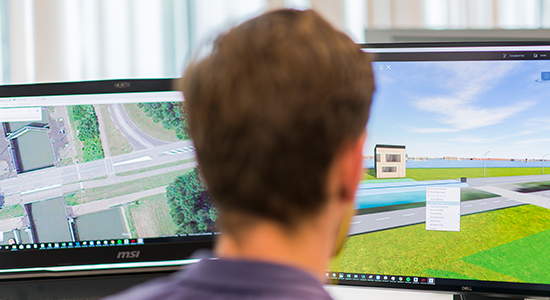Prinses Beatrix lock
Nieuwegein (Netherlands)Share
The Lek canal connects the River Lek with the Amsterdam Rhine canal, thereby forming an important shipping connection between Amsterdam and Rotterdam. The monumental Beatrix lock, with its two gullies, formed a bottleneck on this connection because of the increasing number of ships and the dimensions of modern-day pusher tugs. Rijkswaterstaat decided to build a third lock chamber to ensure that waiting times for shipping remained acceptable.
Our approach
The project was built virtually, and managed and maintained, before being built in real life. All drawings and documents were based on a model that was integrally checked for feasibility, maintainability and safety. The information from all different disciplines was integrally linked and checked before realisation. For example, a VR model was linked to the software application to test and validate the dynamic behaviour of the system with the end users. This was the “digital twin” for the lock, which could also be used to train operators. The project team tried to deliver the information from the model directly as datasets for building and management, with as little post-processing as possible.
In 2017, this project won the EBP BIM award.
Our Expertise
Timing
Start date: 2015
End date: summer 2019
Client
- Rijkswaterstaat
- Sas van Vreeswijk, BESIX, Heijmans, Jan de Nul, Rebel, TDP
Partners
- Besix
- Heijmans
- Jan de Nul
- Martens en van Oord
- Agidens
Project Budget
€180 million
Project Coordinator
Maarten van den Berg & Peter Schakel

During a design review with Rijkswaterstaat and the association of inland navigation Schuttevaer, the lock and mooring facilities were virtually inspected. The shipping companies indicated that the current mooring facilities proposed by Rijkswaterstaat were inadequate, whereby they had to keep the ships stationary by rotating the propeller. This causes the bed of the canal to flush out, resulting in quay wall instability. Using the model, a new design with high bollards was proposed, which was sufficient. The shipping companies indicated in the VR simulation which markings they need in order to pass the lock complex easily and without damage.
Maarten van den Berg



